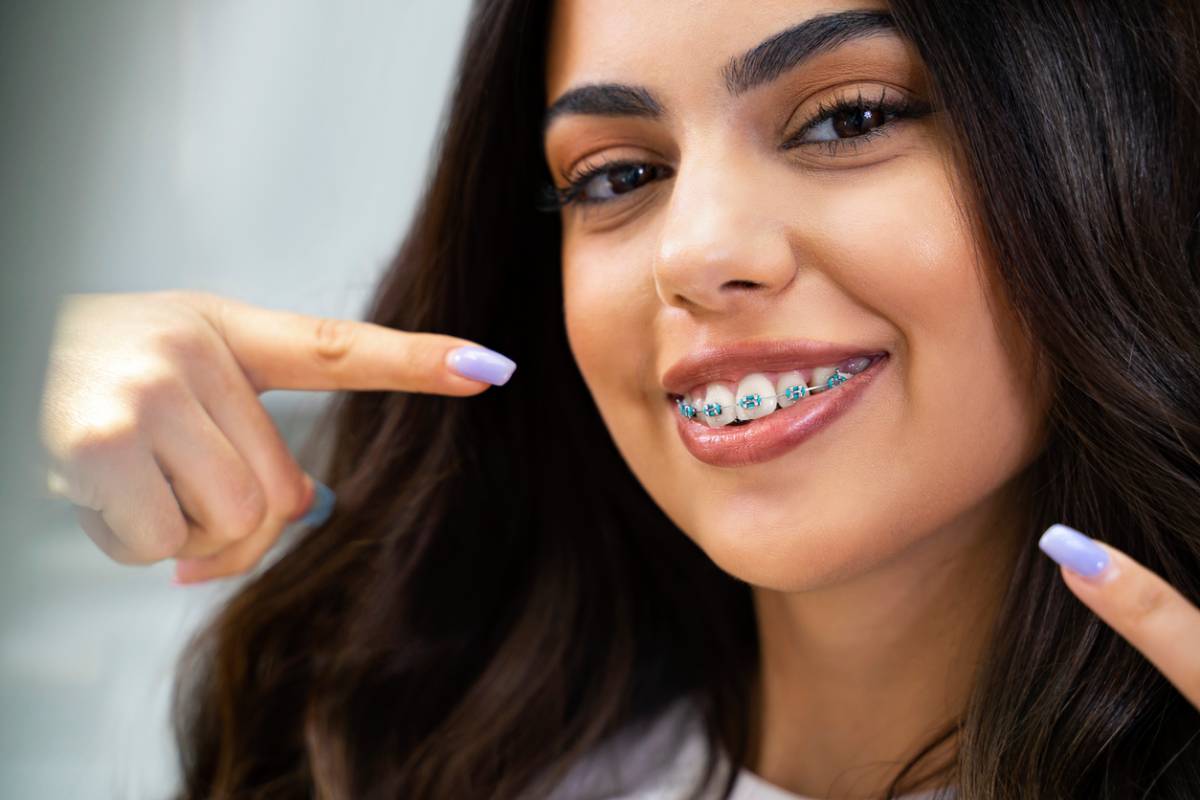There are different types of braces to choose from. Your orthodontist can recommend the best option for your particular case. So, what are the different types of braces? Braces are orthodontics dental devices used to correct a variety of teeth-related issues like:
- Gaps between teeth
- Crowding
- Crooked teeth
- Misaligned teeth
Why Wear Braces
The main objective of wearing braces is to properly align teeth and position them according to the patient’s bite. Many people think that dental braces are only needed for aesthetic purposes. However, this is not true. One of the biggest advantages of dental braces is improving dental health of the patient. It is very difficult to clean crooked and misaligned teeth properly. They can easily accumulate bacteria and food debris and pluck in spaces that are impossible to clean on a daily basis. All this leads to oral infections, cavities, and gum disease.
Not everyone is lucky enough to have been born with perfectly straight teeth, but it is certainly possible to improve the situation. Patients can get braces not only in childhood or teenage years but also later on in life.
What Are the Different Types of Braces?
Clear Correct Braces
Our specialty in East Highland Dental is Clear Correct braces. This is a great alternative to traditional braces. Similar to other orthodontic solutions, they work by applying pressure to each tooth to achieve its proper position.
Clear Correct braces are also known as aligners. In the course of treatment, sets of aligners are custom-made for the patient. Each set is worn for two weeks and slowly shifts the teeth into the properly aligned position. The whole treatment usually takes somewhere between 6 and 15 months.
Benefits of Clear Correct braces compared to traditional braces:
They are almost invisible because they are made of transparent plastic.
They are much more comfortable because they are smooth and will not rub against your cheeks like traditional braces with their metal parts can.
Clear Correct braces can be removed when needed, for example, while eating. This makes them very convenient for daily life.
It is very easy to clean them, and they do not interfere with your oral hygiene routine.
Traditional Braces
Traditional braces are made from high-grade stainless steel. They consist of metal brackets and a thin archwire. Braces are affixed to each tooth with special dental bonding resins and composite resins. Elastics called ligatures or o-rings are used to connect the brackets and the archwires. Your orthodontist changes these ligatures when tightening the braces.
Traditional braces work by applying pressure on the teeth, causing them to slowly move. With time, the correct alignment is achieved by moving every tooth in the needed direction.
Traditional braces are now more sophisticated than they used to be. They became lighter and more aesthetic.
Self-ligating Braces
Self-ligating braces are similar to traditional braces. The difference is that they do not have ligatures to connect the archwires but have a slide mechanism instead.
Typically, these braces provide for slightly faster results. This is achieved because the teeth can move on their own without frequent adjustments. Also, wearing such braces causes less friction and applies less pressure on the teeth. Thus, movement is not as painful as when you wear traditional braces.
Another advantage of self-ligating braces is that you need less visits to your dentist, which can potentially save you some money spent on the treatment. They are also easy to clean.
Ceramic Braces
Ceramic braces are very similar to traditional braces. The only difference is that the brackets are made of clear ceramic material. This makes them less visible than traditional metal braces.
Palatal Expanders
Palatal expanders are mostly used in cases of overcrowded teeth. Before, tooth extraction was used to solve this problem, but now some dentists prefer palatal expansion. This is the process of slowly moving your teeth apart by applying pressure to the back of the upper molars. Once your palate is expanded, it is easier to use other types of braces to achieve the desired results.
Forsus Appliances
This device is typically required in cases of severely incorrect overbites. This solution replaces the headers used with braces. Forsus appliances are also attached to the braces, but they are worn inside your mouth, compared to the headers. The aim of this device is to put the upper or lower jaw into the correct position.
When chosen with the patient’s needs in mind, all these devices can effectively solve the problem of misaligned teeth. However, only your dentist can determine which option is the best for you. Our specialists at East Highland Dental will make a qualified choice and help you achieve your smile goals.

